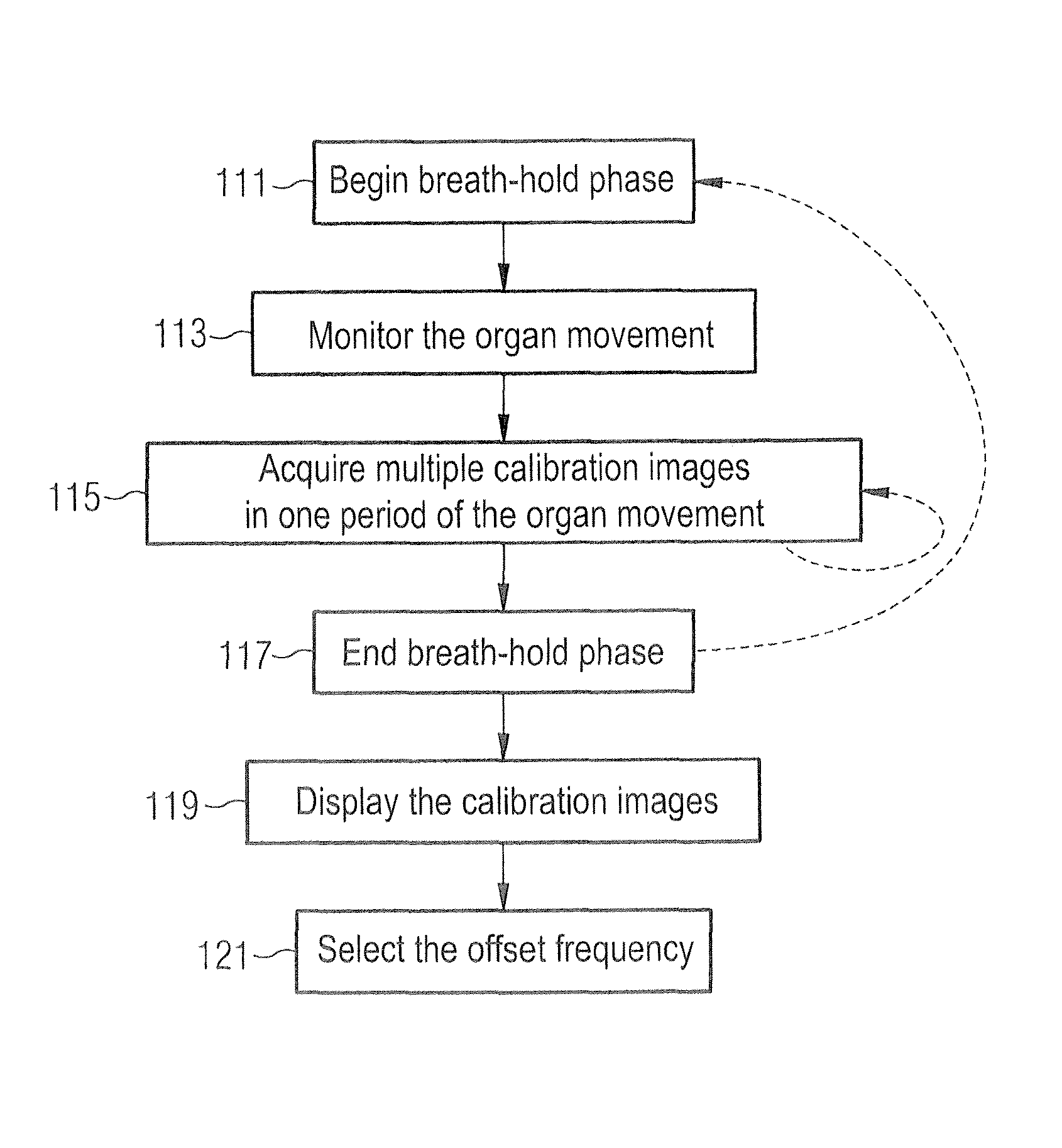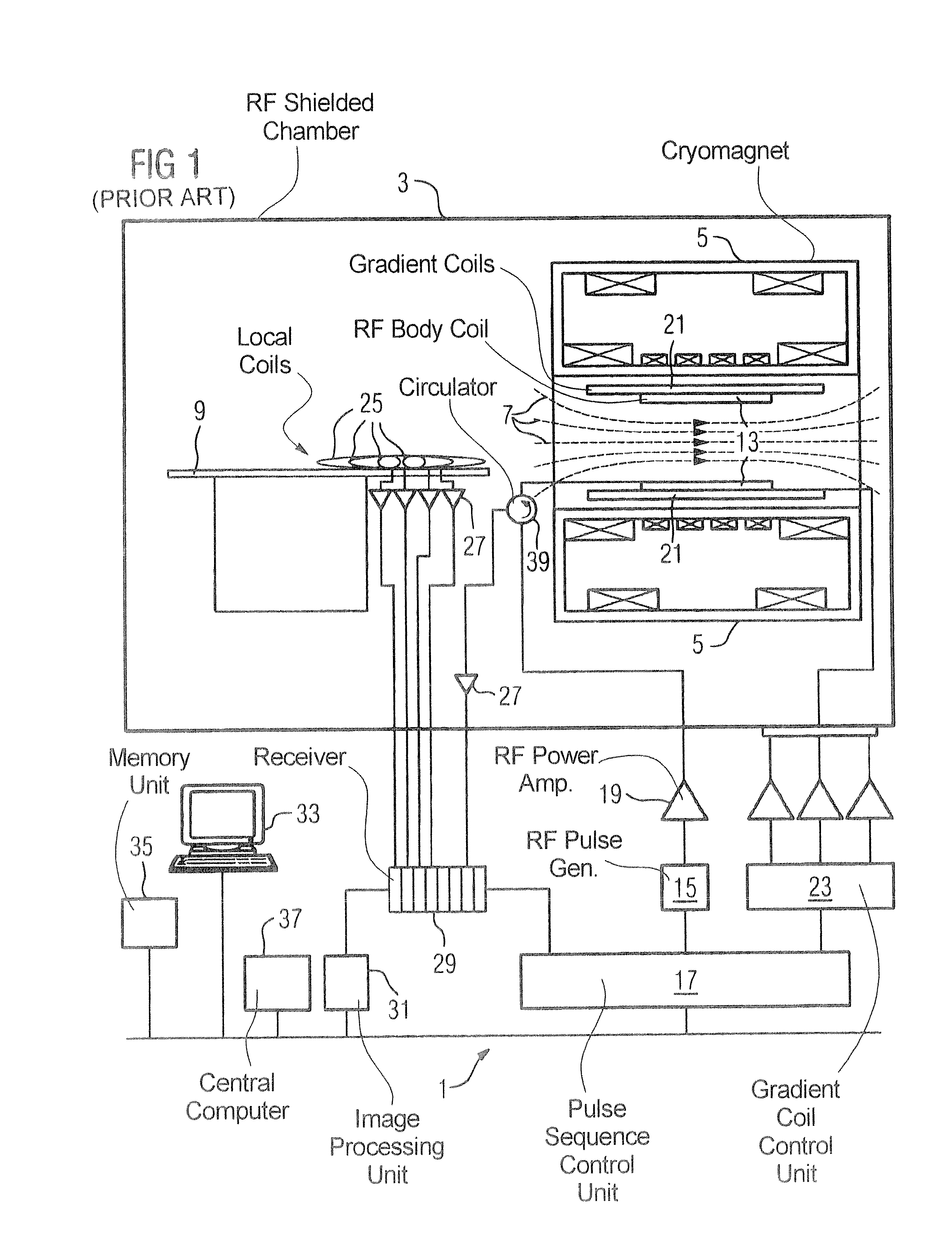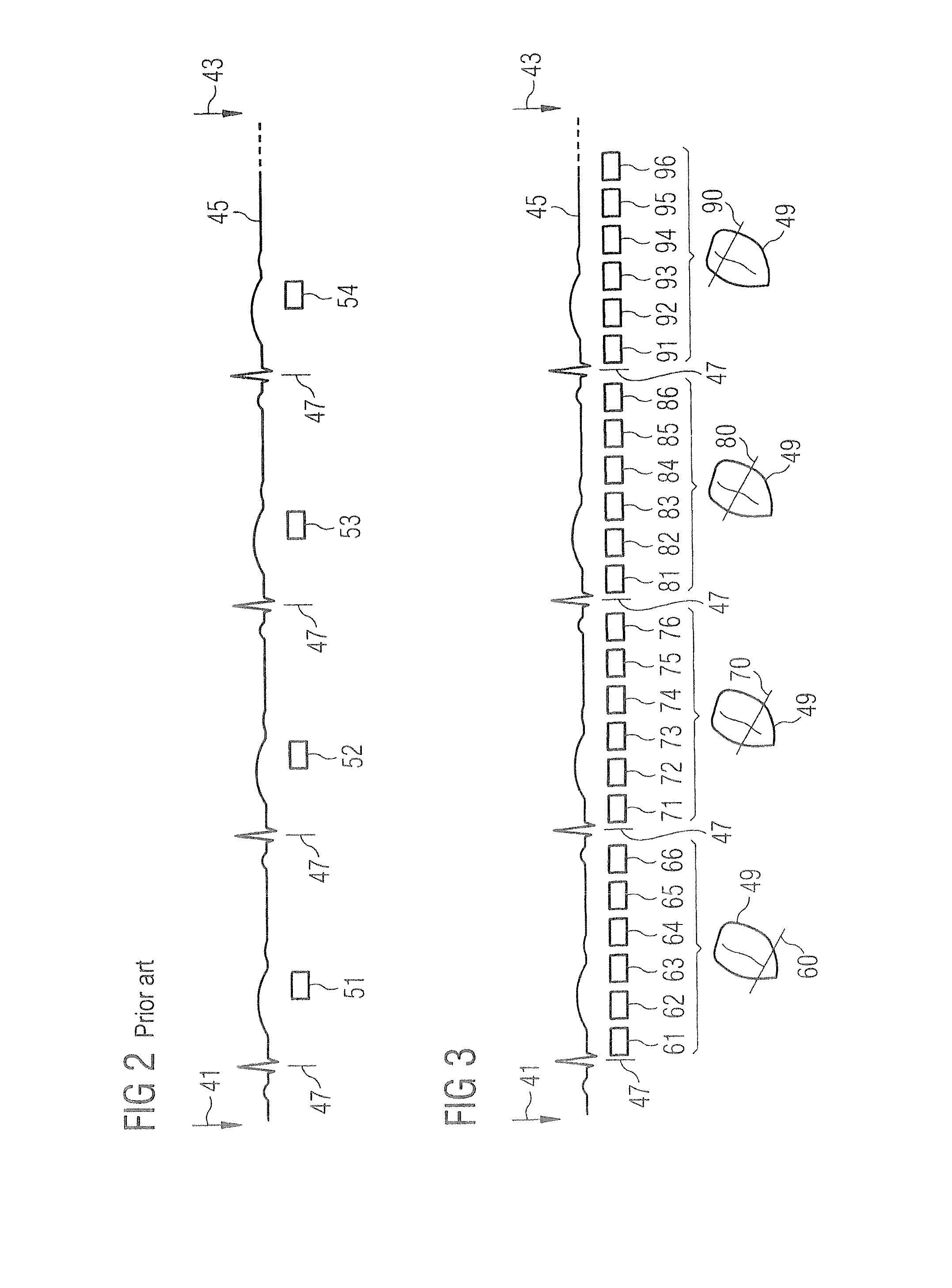Magnetic resonance apparatus and method to acquire and display calibration images
a magnetic resonance and calibration image technology, applied in the field of calibration image acquisition and display, can solve the problems of small errors and inaccuracy in mr signal generation and acquisition, image artifacts, and slight differences, and achieve the effect of faster acquisition and high quality
- Summary
- Abstract
- Description
- Claims
- Application Information
AI Technical Summary
Benefits of technology
Problems solved by technology
Method used
Image
Examples
Embodiment Construction
[0031]FIG. 1 schematically shows the design of a magnetic resonance apparatus 1 with its basic components. In order to examine a body by means of magnetic resonance imaging, different magnetic fields matches to one another as precisely as possible in terms of their temporal and spatial characteristics are radiated into the body.
[0032]A strong magnet (typically a cryomagnet 5 with a tunnel-shaped opening) arranged in a measurement chamber shielded against radio frequencies generates a strong, static basic magnetic field 7 that is typically 0.2 Tesla to 3 Tesla or more. A body or a body part (not shown here) to be examined is placed on a patient bed 9 and is positioned in a homogeneous region of the basic magnetic field 7.
[0033]The excitation of the nuclear spins of the body ensues via magnetic radio-frequency excitation pulses that are radiated via a radio-frequency antenna (shown here as a body coil 13). The radio-frequency excitation pulses are generated by a pulse generation unit ...
PUM
 Login to View More
Login to View More Abstract
Description
Claims
Application Information
 Login to View More
Login to View More - R&D
- Intellectual Property
- Life Sciences
- Materials
- Tech Scout
- Unparalleled Data Quality
- Higher Quality Content
- 60% Fewer Hallucinations
Browse by: Latest US Patents, China's latest patents, Technical Efficacy Thesaurus, Application Domain, Technology Topic, Popular Technical Reports.
© 2025 PatSnap. All rights reserved.Legal|Privacy policy|Modern Slavery Act Transparency Statement|Sitemap|About US| Contact US: help@patsnap.com



